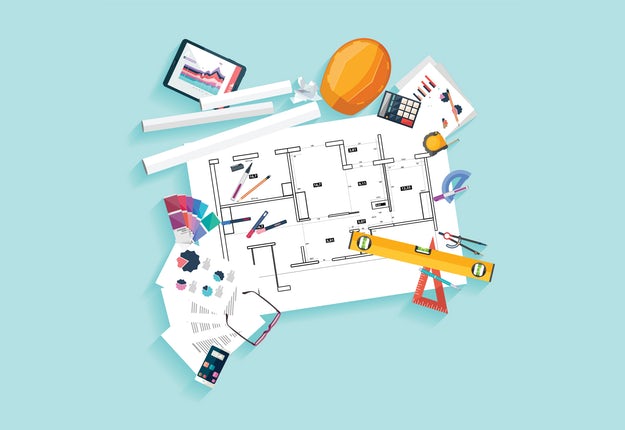Connect with the world's best architects and expand your reach globally — explore the possibilities through Architizer's brand new media kit
For building-product manufacturers, knowing your audience is half the battle. If you can identify the common wants, needs, concerns and priorities of a collective group — in this case, practicing architects — you can communicate with them in language they understand and surface solutions to their most pressing problems. Showing your understanding of an architects’ mind-set will help you build trust in the long-term, establishing you as a reliable source of knowledge every time they specify a project.
A great way to do this is to build a persona of your typical client, based survey feedback, market research and continual communications with them over time. As an example, we’ve outlined the classic characteristics of a project architect below.
For this exercise, we’ve named our persona “Alex the architect,” but it could be Angela the architect, Audrey the architect or Andy the architect. Their name doesn’t even need to begin with “A”; we just love alliteration. The point is, “Alex” is just a template — these characteristic traits will vary from client to client, and it’s your job to get to know each type of architect and build up a clear picture of them over time. The more you know, the more you will be able to address their needs — and the more indispensable you will become to them.
So, let’s look into some of the most common ingredients that make up the modern-day persona of “The Architect”:

Via iStock; credit: tanja_krivich
Values and Goals
Alex the architect values the following factors when selecting building-products for her project:
- Design quality of building-products.
- Timely communication with manufacturers.
- Technical insights on products.
- Honesty from manufacturers, particularly regarding price.
- Accuracy from manufacturers.
As a project architect, Alex’s primary goal is to design and deliver a great-looking project — for her client, but also for her portfolio — and impress her boss by achieving all this in a timely manner. Alex values design quality above all, but often has to compromise based on her client’s budget and time frame.
Because she is always tight on time, she values quick, reliable communication from manufacturers, and technical insights that can help him come to the correct specifying decision. She values honesty from manufacturers — she doesn’t want to be sold something that is later found to be inappropriate or too expensive for her project, so she’d rather manufacturers are up front about what solutions they can provide.
More than anything, she values accuracy in the quality, price and lead-time given in a quote, reducing the opportunity for contractors to substitute building-products further down the line.

Via iStock; credit: Rogotanie
Challenges and Pain Points
Alex the architect’s daily gripes are as follows:
- She never has enough time.
- She feels trade shows and lunch-and-learns are inefficient ways to get information on building-products.
- She hates having to go through a dozen tabs on her browser to make her short list for each building-product.
- She hates being sold to.
Alex does not have enough hours in the day for design, let alone specifying. In between BIM modeling, drafting schedules, making revisions and coordinating junior members of staff, she’s too busy to be constantly walking through trade shows, sitting through lunch-and-learns and flicking through vast building-product catalogues. Her preference is for a one-stop online shop for building-products with all the information she needs in one place.
Alex does not want to be sold to — she wants a solution to her design problem rather than a sales pitch. Alex hates cold calls and wants to find her ideal products without outside pressure from manufacturers.

Via iStock; credit: Rogotanie
Sources of Information
Alex seeks out information on building-products primarily from the following places:
- Online platforms.
- Architect-peers.
- Building-product manufacturers.
Alex is subscribed to Architectural Digest but barely reads it now. She occasionally sits through a lunch-and-learn hosted by a manufacturer, but it’s mostly just to get the continuing professional development credits she needs as an AIA-member architect. All the material she uses for inspiration and information on building-products is now online, where she can organize everything in one place.
Outside of this, Alex relies most on her architect-peers for information on building-products. She trusts their review of building-products used in previous projects, and will specify based on this information most of the time. That said, she will listen to manufacturers that prove themselves to be a strong source of technical knowledge, particularly when it comes to performance factors for niche building-products.

Via iStock; credit: robuart
Role in the Specification Process
Alex the architect’s role during the specification phase of a project is as follows:
- She is the decision-maker.
- She passes on information to the spec writer.
- She aims to minimize the risk of value-engineering post-specification.
- She passes on information to her peers.
As project architect, Alex is a decision-maker, and can make the call on whether or not your product gets into the specification documents. That said, Alex is always wary of the general contractor value-engineering her selections out for a cheaper product at a later stage. She therefore demands as much technical information as possible from the manufacturer to find the optimal product in terms of performance, so that the chance of it being substituted is minimized.
Alex also has a role post-specification that can’t be ignored. As she manages the project through to completion, she can see firsthand which building-products truly achieved the look and performance she was aiming for. From then on, the building-products that held up to scrutiny will find their way back into her specifications for future projects, and she will impart her knowledge of these products to her peers.
While these characteristics and behavioral patterns will vary from architect to architect, they will be pretty spot-on for many professionals. Architects love to seek out reliable sources of wisdom, and then become one of those sources of wisdom for their peers, completing a “knowledge loop” that provides value to the firm, project after project.
As a building-product manufacturer, you already know that understanding your core audience is the first step on the road to becoming a key part of that knowledge loop — and leveraging your expertise for cyclical success. Continually communicating with different architects will provide many more valuable insights into what makes them tick, but this guide provides a solid foundation. Once you’ve got it down, head over to Architizer and connect with them!
Connect with the world’s best architects and expand your reach globally — explore the possibilities through Architizer’s brand new media kit









